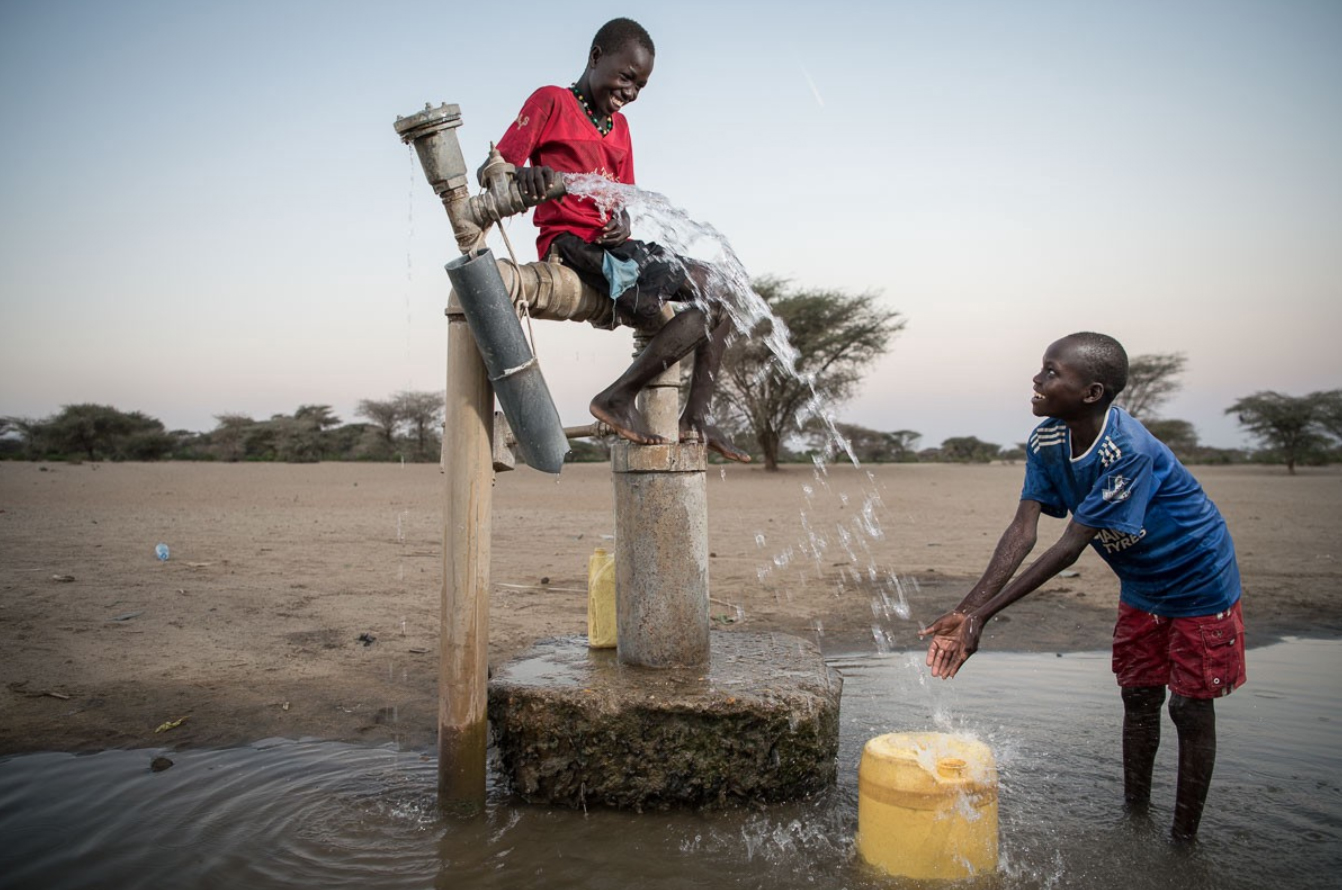I. Promise in peril
Leave no one behind. That defining principle of the 2030 Agenda for Sustainable Development is a shared promise by every country to work together to secure the rights and well-being of everyone on a healthy, thriving planet. But halfway to 2030, that promise is in peril. The Sustainable Development Goals are disappearing in the rear-view mirror, as is the hope and rights of current and future generations. A fundamental shift is needed – in commitment, solidarity, financing and action – to put the world on a better path. And it is needed now.
We can do better, and in moments of severe challenge, humanity has always come through. Now is another of those moments. The SDG Summit, to be held in September 2023, must signal a genuine turning point. It must mobilize the political commitment and breakthroughs our world desperately needs. It must right the historic injustices at the core of the international financial system to give the most vulnerable countries and people a fair chance at a better future. It must deliver a rescue plan for people and planet.
A. Delivering on commitments: where do we stand halfway to 2030?

Early efforts after the Sustainable Development Goals were adopted produced some favourable trends. Extreme poverty and child mortality rates continued to fall. Inroads were made against such diseases as HIV and hepatitis. Some targets for gender equality were seeing positive results. Electricity access in the poorest countries was on the rise, and the share of renewables in the energy mix was increasing. Globally, unemployment was back to levels not seen since before the 2008 financial crisis. The proportion of waters under national jurisdiction covered by marine protected areas more than doubled in five years. But it is clear now that too much of that progress was fragile and most of it was too slow. In the past three years, the coronavirus disease (COVID-19) pandemic, the war in Ukraine and climaterelated disasters have exacerbated already faltering progress.
It is time to sound the alarm. At the midpoint on our way to 2030, the Sustainable Development Goals are in deep trouble. An assessment of the around 140 targets for which trend data is available shows that about half of these targets are moderately or severely off track; and over 30 per cent have either seen no movement or regressed below the 2015 baseline.
Under current trends, 575 million people will still be living in extreme poverty in 2030, and only about one third of countries will meet the target to halve national poverty levels. Shockingly, the world is back at hunger levels not seen since 2005, and food prices remain higher in more countries than in the period 2015–2019. The way things are going, it will take 286 years to close gender gaps in legal protection and remove discriminatory laws. And in education, the impacts of years of underinvestment and learning losses are such that, by 2030, some 84 million children will be out of school and 300 million children or young people attending school will leave unable to read and write.
If ever there was an illumination of the short-sightedness of our prevailing economic and political systems, it is the ratcheting up of the war on nature. A small window of opportunity is fast closing to limit the rise in global temperatures to 1.5 degrees Celsius, prevent the worst impacts of the climate crisis and secure climate justice for people, communities and countries on the front lines of climate change. Carbon dioxide levels continue to rise — to a level not seen in 2 million years. At the current rate of progress, renewable energy sources will continue to account for a mere fraction of our energy supplies in 2030, some 660 million people will remain without electricity, and close to 2 billion people will continue to rely on polluting fuels and technologies for cooking. So much of our lives and health depend on nature, yet it could take another 25 years to halt deforestation, while vast numbers of species worldwide are threatened with extinction.
The lack of progress towards the Sustainable Development Goals is universal, but it is abundantly clear that developing countries and the world’s poorest and most vulnerable people are bearing the brunt of our collective failure. This is a direct result of global injustices that go back hundreds of years but are still playing out today. The compounding effects of climate, COVID-19 and economic injustices are leaving many developing countries with fewer options and even fewer resources to make the Goals a reality.
B. Breaking through to a better future for all
We cannot simply continue with more of the same and expect a different result. We cannot persist with a morally bankrupt financial system and expect developing countries to meet targets that developed countries met with far fewer constraints. The 2030 Agenda stated that this generation could be the first to succeed in ending poverty – and the last to have a chance of saving the planet. This higher purpose remains within grasp, but it requires an unprecedented effort by individual Governments, a renewed sense of common purpose across the international community and a
global alliance for Sustainable Development Goals-related action across business, civil society, science, young people, local authorities and more. It requires that we come together in September to deliver a rescue plan for people and planet.
Building on the evidence captured in the Global Sustainable Development Report and on the lessons since 2015, the present report identifies a series of urgent actions for your consideration in five key areas.


First, Heads of State and Government should recommit to seven years of accelerated, sustained and transformative action, both nationally and internationally, to deliver on the promise of the Sustainable Development Goals.
This calls for strengthening social cohesion in order to secure dignity, opportunity and rights for all while reorienting economies through green and digital transitions and towards resilient trajectories compatible with the goal of the Paris Agreement to limit the global temperature increase to 1.5 degrees Celsius. It calls for a once-in-a-generation commitment to overhaul the international financial and economic system so that it responds to today’s challenges, not those of the 1940s. And it calls for unprecedented collaboration among members of the Group of 20 and support for all developing countries to advance Sustainable Development Goals-related and climate-related action.
Member States should adopt an ambitious and forward-looking political declaration and present global and national commitments for Goals-related transformation at the SDG Summit.
Second, Governments should advance concrete, integrated and targeted policies and actions to eradicate poverty, reduce inequality and end the war on nature, with a focus on advancing the rights of women and girls and empowering the most vulnerable.
This requires the following: giving meaning to the commitment to leave no one behind by expanding social protection floors and access to essential services; creating job opportunities in the care, digital and green economies; urgently tackling the profound crisis in education; strengthening action to advance gender equality, leveraging digital technologies to close divides; supporting the inclusion of persons displaced by crises; and tackling the exclusion of marginalized groups, such as persons with disabilities.
Leaders should embrace the climate acceleration agenda to drive a just renewables revolution and secure climate justice for those on the front lines of the climate crisis. They must also deliver on the Kunming-Montreal Global Biodiversity Framework, work to further reduce risks from disasters and build integrated and sustainable food, water and sanitation systems while making the right to a healthy environment a reality for all people.
Third, Governments should strengthen national and subnational capacity, accountability and public institutions to deliver accelerated progress towards achieving the Sustainable Development Goals.
Delivery of the Sustainable Development Goals must become a central focus for national planning, oversight mechanisms and domestic budgets. Major investments are needed to strengthen public sector capacity and build appropriate digital infrastructure. Local and subnational governments must be empowered and supported to bring implementation of the Goals to the ground level. An effective regulatory framework is needed to align private sector governance models with sustainable development objectives. A fresh push is needed to reap the data dividend, and the monitoring, follow-up and review of the Goals must be taken to the next level, including by strengthening civic space and public engagement in policy- and decision-making.
Fourth, to ensure that developing countries can deliver in these areas, the international community should recommit at the SDG Summit to deliver on the Addis Ababa Action Agenda and to mobilize the resources and investment needed for developing countries to achieve the Sustainable Development Goals, particularly those in special situations and experiencing acute vulnerability.
Member States should endorse and deliver a $500 billion per year Sustainable Development Goals stimulus plan between now and 2030.
This calls for immediate action: (a) to tackle the high cost of debt and the rising risks of debt distress, including by converting short-term, high-interest borrowing into long-term (more than 30 year) debt at lower interest rates; (b) to massively scale-up affordable, long-term financing for development, especially through multilateral development banks, rechannelling special drawing rights and aligning all financing flows with the Goals; and (c) to expand contingency financing to all countries in need.
Member States should recognize and address the need for deep reforms of the international financial architecture through a new Bretton Woods moment, including by enhancing the voice and participation of developing countries in the governance of international financial institutions. This is essential in order to ensure that the financial architecture delivers for all developing countries and secures urgent access to grants and long-term concessional finance as they transition to renewable energy-based, climate-resilient, inclusive economies. It requires building on the lessons from recent efforts to mobilize private finance, including revising risk appetite and the criteria used by credit ratings agencies and adjusting policies and instruments.
Finally, Member States should facilitate the continued strengthening of the United Nations development system and boost the capacity of the multilateral system to tackle emerging challenges and address Sustainable Development Goals-related gaps and weaknesses in the international architecture that have emerged since 2015.
The United Nations development system continues to play a crucial role in supporting countries in delivering on their national Goals-related ambitions. What the system offers has evolved considerably since 2015, enabled by the most ambitious reforms in decades. The UN system will continue to strengthen its offer. Member States should continue to support the contribution of Resident Coordinators and United Nations country teams by delivering on the funding compact, ensuring the resident coordinator system is fully funded and further capitalizing the Joint Sustainable Development Goals Fund.
Many of the proposals in Our Common Agenda are already supporting acceleration towards achieving the Goals. Member States, through the forthcoming Summit of the Future, should build on the commitment and direction provided by the SDG Summit to ensure progress in other areas of particular importance for Goals-related progress. Those areas include reforming the international architecture, going beyond gross domestic product (GDP), strengthening digital cooperation, boosting youth participation in decision-making, transforming education, establishing an emergency platform and advancing a new agenda for peace. Further action is also needed to boost the capacities of developing countries in the areas of trade and technology, to align global trading rules with the Sustainable Development Goals and to establish more efficient and effective technology transfer mechanisms.
History has shown that the worst hardships can be overcome through human determination, solidarity, leadership and resilience. The destruction brought about by World War II was followed by new forms of solidarity and cooperation through the United Nations and the Marshall Plan. This period also witnessed advances in global positioning systems, modern air travel and satellite communications, as well as accelerated decolonization. Preventing widespread hunger and starvation in the 1960s galvanized investment in agriculture and the green revolution. Other more rece n t examples include the global responses to fight HIV/AIDS and, in part, the surge in action and community to save lives and livelihoods during the COVID-19 pandemic.
These outcomes, by no means inevitable, resulted from unique combinations of purpose, solidarity, ingenuity and technology. This moment of peril demands a similar response if we are to deliver on our 2015 promise.


